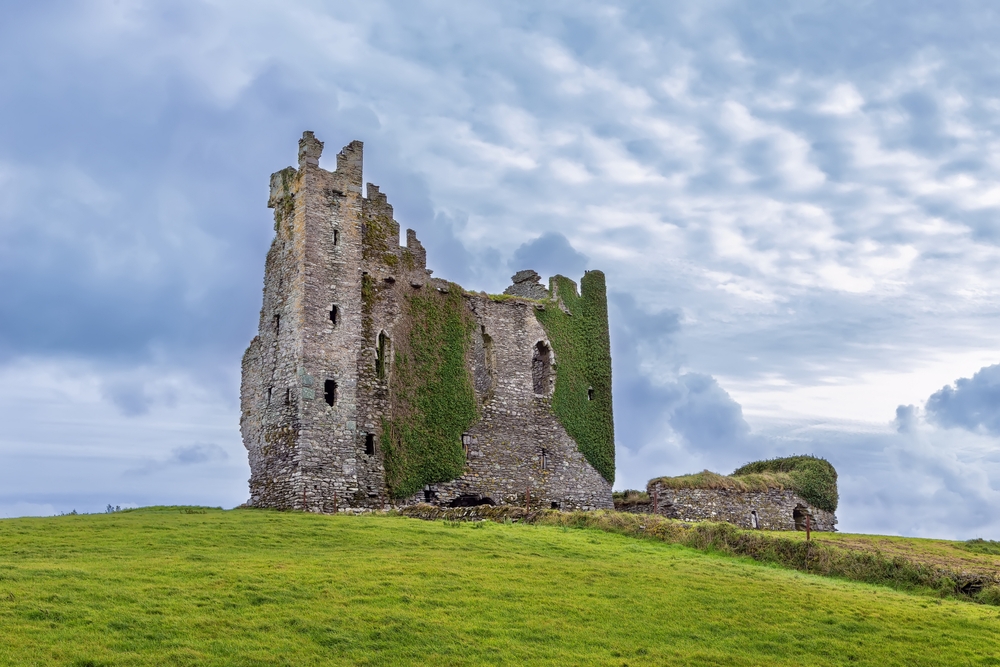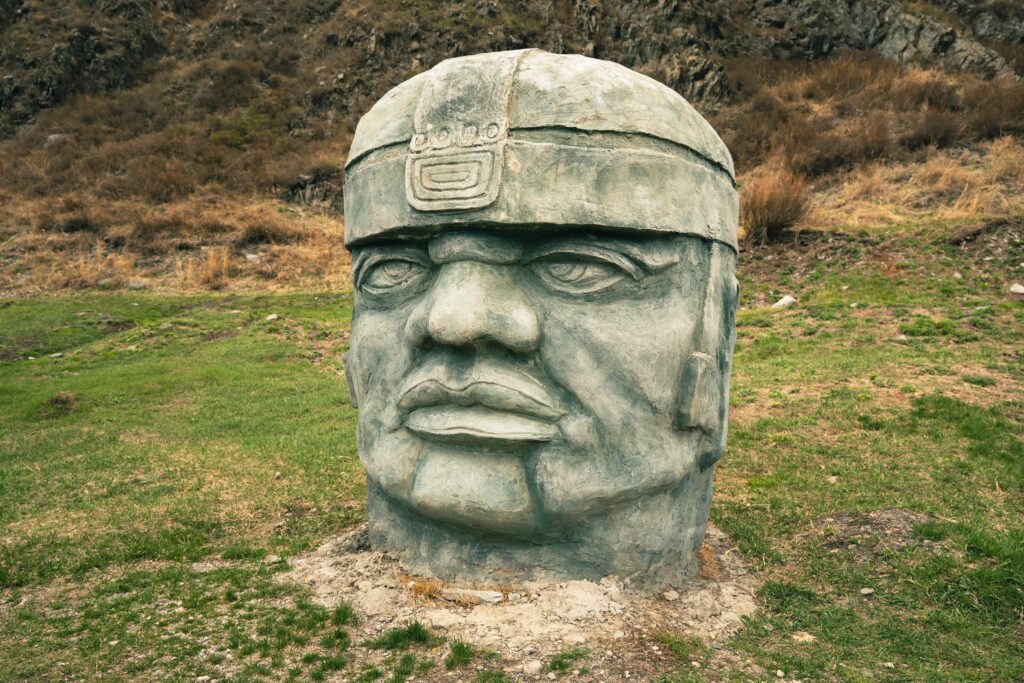Across the globe, ancient fortresses stand as silent witnesses to the rise and fall of civilizations. These impressive structures, once vibrant with activity, have been forgotten by time due to war, natural disasters, or changing societal needs. Hidden in remote locations or overshadowed by modern developments, they now exist as hauntingly beautiful ruins. Each one tells a story of resilience, power, and eventual decline, offering a glimpse into the past. These abandoned sites hold fascinating secrets waiting to be discovered, and here are some of the most intriguing ancient fortresses that history has left behind.
Ayaz-Kala, Uzbekistan

Perched atop a hill overlooking the Kyzylkum Desert in Uzbekistan, Ayaz-Kala is a complex of three fortresses built between the 4th century BCE and the 7th century CE. These fortresses were part of a defensive chain protecting the Khorezm region from nomadic invasions. Over centuries, as the political and economic significance of the area waned, it was gradually abandoned. The harsh desert environment accelerated its deterioration, leading to its current ruined state. Today, the remnants of this structure stand as a testament to ancient military architecture, attracting archaeologists and adventurous travelers. The site’s isolation has contributed to its preservation, offering a glimpse into the region’s storied past.
Chirag Gala, Azerbaijan

Chirag Gala, meaning “Lamp Castle,” is a ruined fortress located in the Guba Forest of Azerbaijan. Constructed in the 5th century by the Sassanid Persians, it served as a defensive stronghold and a beacon to warn of approaching enemies. With the decline of the Sassanid Empire and changing military strategies, the fortress lost its strategic importance and was eventually deserted. Its remote location atop a mountain made it difficult to access, leading to its neglect over the centuries. Today, its ruins offer panoramic views of the surrounding landscape, drawing hikers and history enthusiasts. Its name reflects its historical role in signaling danger, illuminating the region’s rich past.
Costești-Cetățuie Dacian Fortress, Romania

Nestled in the Orăștie Mountains of Romania, the Costești-Cetățuie Dacian Fortress was established in the 1st century BC during the reign of Burebista. It functioned as a defensive stronghold and a royal residence for Dacian kings. Following the Roman conquest of Dacia in the 2nd century AD, the fortress was destroyed and subsequently abandoned. Over time, natural elements and human activities led to its further decline. Today, the site is part of the Dacian Fortresses of the Orăștie Mountains UNESCO World Heritage Site, attracting scholars and tourists interested in ancient history. Their strategic location offers insights into Dacian defensive architecture and their resistance against Roman expansion. Ongoing archaeological excavations continue to uncover artifacts, shedding light on the daily lives of its ancient inhabitants.
Hyrcania Fortress, West Bank

Hyrcania, also known as Khirbet el-Mird, is an ancient fortress situated in the Judean Desert of the West Bank. Built in the 2nd or 1st century BCE by either John Hyrcanus or Alexander Jannaeus, it served as a strategic military outpost. The fortress was destroyed by Gabinius but later rebuilt and expanded by King Herod. After Herod’s death, it was abandoned and remained largely forgotten until Byzantine monks established a monastery there in the late 5th century. The monastery was active until the early 9th century, after which the site fell into ruin. Today, its ruins offer a glimpse into the region’s tumultuous history and the various civilizations that once occupied it. Recent archaeological efforts have uncovered unique inscriptions, providing valuable insights into its past. Its remote location has helped preserve its remnants, making it a significant point of interest for historians and archaeologists.
Strumica Fortress, North Macedonia

Overlooking the city of Strumica in North Macedonia, Strumica Fortress, also known as “Carevi Kuli” or “Tsar’s Towers,” has a history dating back to antiquity. It served as a strategic military fortification during various periods, including the Roman and Byzantine eras. By the 19th century, the fortress had been long abandoned and was largely in ruins, becoming part of local legends and traditions. Its elevated position provided a vantage point over the surrounding area, making it a key defensive site. Today, its remnants are a cultural landmark, attracting visitors interested in its storied past. Recent archaeological research and conservation efforts have aimed to restore parts of the fortress, highlighting its historical significance. The site offers panoramic views of the city and surrounding landscapes, enhancing its appeal to tourists and locals alike.
Spinalonga Island, Greece

Located off the coast of Crete, Spinalonga Island has a multifaceted history. Initially fortified by the Venetians in the late 16th century to protect against pirate attacks, it later fell under Ottoman control. In the early 20th century, from 1903 to 1957, the island served as a leper colony, isolating those afflicted by the disease. Following the closure of the leper colony, it was abandoned and left to decay. Its haunting past and well-preserved ruins have since attracted tourists and inspired literature, notably Victoria Hislop’s novel “The Island.” Today, it is a popular tourist destination, with visitors exploring its historic structures and learning about its poignant history. The island’s unique blend of Venetian fortifications and remnants of the leper colony offer a compelling narrative of resilience and transformation.
Fort Alexander, Russia

Situated on a small artificial island in the Gulf of Finland near St. Petersburg, Fort Alexander was constructed between 1838 and 1845 as part of Russia’s coastal defense system. Designed to withstand naval assaults, its formidable structure featured thick walls and numerous cannons. However, advancements in military technology soon rendered the fort obsolete, and it never saw combat. In the late 19th century, it was repurposed as a research facility for studying infectious diseases, notably the plague. Following the Russian Revolution, the fort was abandoned and left to the elements. Today, it stands as a haunting relic of military engineering, accessible only by boat and attracting adventurous explorers. Its unique history as both a military fortification and a medical research facility adds to its enigmatic allure.
Ballycarbery Castle, Ireland

Located near Cahersiveen in County Kerry, Ireland, Ballycarbery Castle was built in the 16th century by the McCarthy clan. This once-grand structure served as a stronghold during turbulent times in Irish history. In 1652, it was attacked and partially destroyed by Oliver Cromwell’s forces during the Irish Confederate Wars. Following this assault, it was abandoned and fell into ruin. Over the centuries, exposure to harsh weather conditions further deteriorated its structure. Today, the ivy-clad ruins of Ballycarbery Castle stand as a picturesque testament to Ireland’s medieval past, attracting photographers and history enthusiasts. Despite its dilapidated state, its remaining walls and towers offer a glimpse into its former grandeur.
Fasil Ghebbi, Ethiopia

Situated in the city of Gondar, Ethiopia, Fasil Ghebbi is a fortress-city that served as the residence of Ethiopian emperors during the 16th and 17th centuries. Enclosed by a 900-meter-long wall, the complex includes palaces, churches, monasteries, and unique public and private buildings marked by Hindu and Arab influences, subsequently transformed by the Baroque style brought to Gondar by Jesuit missionaries. The decline of the Ethiopian Empire and subsequent invasions led to the abandonment and deterioration of the site. In the 19th century, the complex suffered further damage during conflicts and was left neglected. Today, it is recognized as a UNESCO World Heritage Site, with ongoing restoration efforts to preserve its historical significance. Its unique architectural style reflects the diverse cultural influences that have shaped Ethiopia’s history.
Fort Mahon, France

Also known as Fort d’Ambleteuse, Fort Mahon is located on the northern coast of France in the Pas-de-Calais region. Constructed in the 17th century under the orders of King Louis XIV, it was designed to protect the coastline from naval invasions. Over the centuries, it saw various uses, including serving as a barracks and a customs post. During World War II, it was occupied by German forces and suffered significant damage. Post-war, the fort was abandoned and fell into disrepair. Today, it stands as a historical monument, with restoration efforts underway to preserve its legacy. Its strategic location offers panoramic views of the English Channel, making it a point of interest for visitors.
Rocca Calascio, Italy

Perched at an elevation of 1,460 meters in the Apennine Mountains of Italy, Rocca Calascio is one of the highest fortresses in the country. Built in the 10th century, it served as a military outpost to control the surrounding valleys. It was constructed solely for military purposes and did not house any noble residences. In 1461, a devastating earthquake caused significant damage, leading to its abandonment. Over time, the structure deteriorated further due to exposure to the elements. Today, it is a popular destination for hikers and photographers, offering breathtaking views of the Italian countryside. Its remote location and historical significance have also made it a filming location for several movies.
Pidhirtsi Castle, Ukraine

Located in the Lviv region of Ukraine, Pidhirtsi Castle was constructed in the mid-17th century by the Polish-Lithuanian Commonwealth’s Crown Hetman Stanisław Koniecpolski. Designed as a grand residence with fortification features, it showcased a blend of Renaissance and Baroque architecture. It was renowned for its opulent interiors, extensive gardens, and a rich collection of artworks. However, it suffered damage during various conflicts, including the Khmelnytsky Uprising and both World Wars. In 1956, a fire devastated much of the interior, leading to its abandonment. Today, it stands as a hauntingly beautiful ruin, with efforts underway to restore and preserve its historical and architectural significance. Its storied past and architectural grandeur continue to captivate visitors and historians alike.
This article originally appeared on Rarest.org.
More from Rarest.org
12 Rare Mammals That Live in the World’s Tallest Mountains

High-altitude regions around the world are home to some of the most unique and uncommon mammals on the planet. They have adapted to survive in the harsh, cold, and rugged environments of the world’s tallest mountains. Read More.
11 Mysterious Cave-Dwelling Creatures You Never Knew Existed

Beneath the earth’s surface lies a hidden world of caves, home to creatures that have evolved in complete darkness. These mysterious animals have adapted in remarkable ways, losing their vision, developing heightened senses, and finding ingenious methods to survive in harsh, nutrient-poor environments. Read More.
14 Mysterious Lost Civilizations That Still Puzzle Historians

Throughout history, many civilizations have risen to greatness, only to mysteriously vanish, leaving behind ruins and unanswered questions. These lost cultures, once thriving and influential, continue to puzzle historians and archaeologists alike. Read More.
